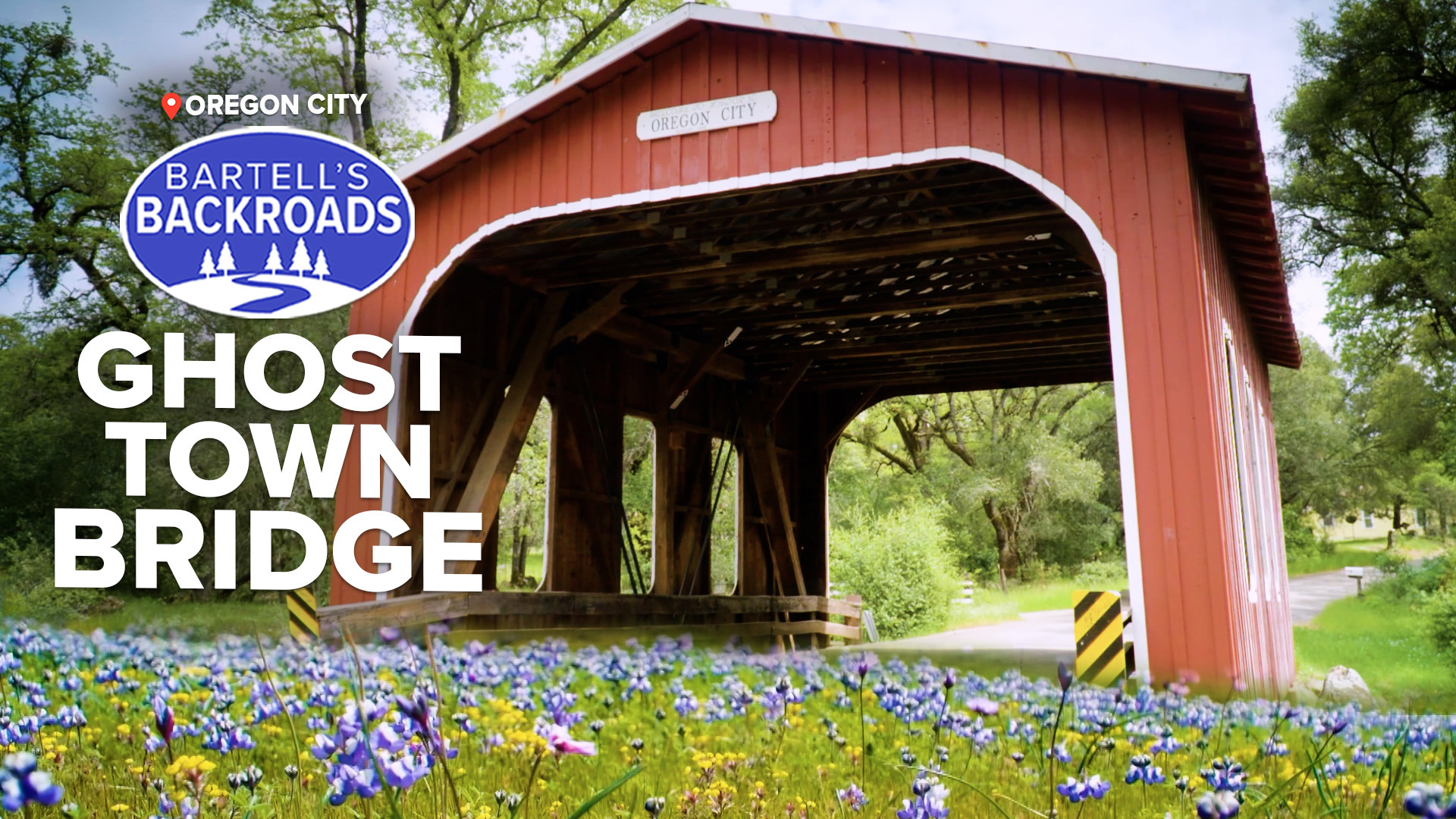OREGON CITY, Calif. — While many come to see the wildflowers at Table Mountain in Oroville, few visit this nearby California gold rush town founded by Oregonians.
“On a wildflower weekend, we get 50 people a day during peak season that show up at the school,” said local historian Larry Mauch.
This iconic red covered bridge is the entrance to Oregon city, California, a beautifully preserved ghost town with nothing more than a one-room schoolhouse.
When asked how Oregon City ended up in the middle of nowhere, Mauch’s answer is simple.
“Because there was gold discovered here early on,” he said.
The Butte County Historical Society volunteer said when the California Gold Rush started in 1848, wagon trains from Oregon were the first to arrive and stake mining claims.
“Wherever those people ended, ‘Oh, this is Oregon Gulch’ or ‘This is Oregon City.’ They just named everything after Oregon,” Mauch said.
TAKE A TRIP ON BARTELL'S BACKROADS:
► See an interactive map of everywhere John has visited on the backroads
► Watch all of the Backroads videos
► Follow John on Facebook
At its peak, Oregon City had a population of about 1,200 people. The town’s stores served nearby mining camps, and a school was built for the children. Inside, the one-room building is pretty sparse.
“The way the early schools worked is that there was only one teacher to teach all grades,” Mauch said.
When miners couldn’t find any more gold, Oregon City turned to farming and ranching. The population slowly declined, and the old schoolhouse was turned into a community center, and for a short time, it served as a Hollywood movie set.
In 1977, the Oregon City school house was converted into a jail for the movie, Last of the Cowboys. It starred Henry Fonda, who played a truck driver that took a group prostitutes with him on a cross-country trip.
“They turned the school into a jail and put Henry Fonda in jail,” Mauch recalled.
In 1980, the Butte County Historical Society started renovating the aging schoolhouse. At the same time, the bridge into Oregon city, which originally was not covered, needed to be replaced. Locals got the idea to raise money to cover the bridge in hope that it would attract tourists.
When asked if it was only built to attract tourists or take tourists away from the wildflowers at Table Mountain, Mauch thought for a moment.
“Well, it was built as something else to do while you are up here,” he said.
If you’d like to visit the school, check the Butte County Historical Society website for a list of dates when it’s open to the public.
ANOTHER GHOST TOWN ON THE BACKROADS: The coldest place in California is a ghost town.

